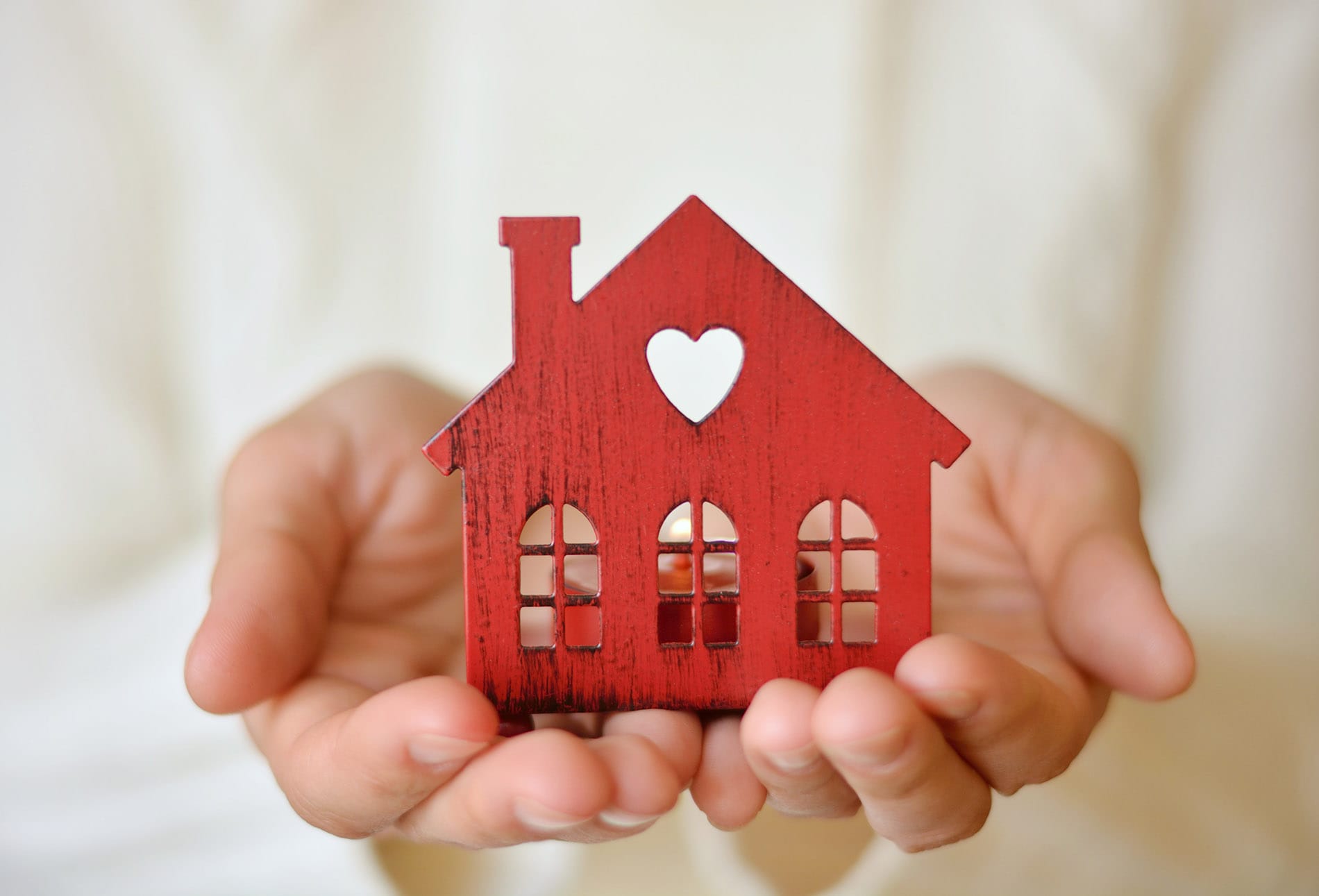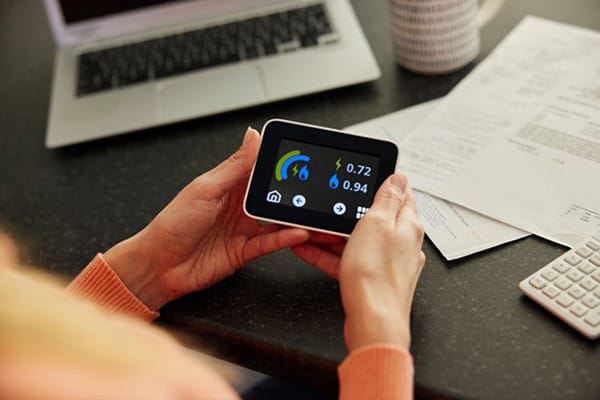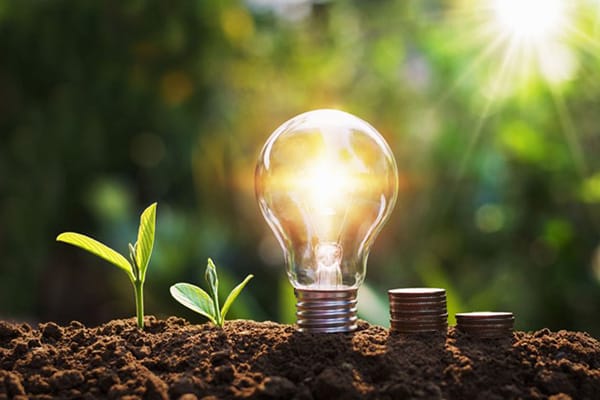Homes can be like hungry teenagers, burning and consuming energy, seemingly without end.
Fortunately, a home’s energy consumption is controllable, and we’ll show you how (with apologies for not being able to help the parents of uncontrollable teens). This is never truer than when someone moves into a new home.
Knowing the home energy usage of a new or current abode is vital to anyone’s budget planning. Energy efficiency measures help to keep energy bills down and comfort levels up. So let’s look at how to diagnose a home’s energy usage and help turn it into a lean, mean, low-emissions living machine.
What Is the Home Energy Usage of the Average American House?
It isn’t easy to calculate precisely the average home energy usage across the country. Some houses are well insulated while others only run on electricity. Location, building materials, and lifestyle all profoundly affect energy use.
That said, according to the U.S. Energy Information Administration (EIA), in 2021, the average annual electricity consumption for residential electricity was 10,632 kilowatt-hours (kWh).
Every month that equates to an average of 886 kWh for every residential customer costing homeowners around $122. According to Energy Star, the total average U.S. residential energy bill is $2,060 per year.
What Areas Use the Most Electricity in a Home?
It’s vital to have an overview of where most home energy usage occurs. Thanks to Energy Star, the typical home’s energy use can be broken down as such:
- Space heating: 29%
- Electronics: 21%
- Cooling (including air conditioning): 13%
- Water heating: 13%
- Lighting: 12%
- Appliances: 12%
People moving into a new home can ask their realtor for the approximate energy usage of their new home or ask for a professional home energy audit.
Should I Get a Home Energy Audit?
A professional home energy audit costs between $145-420: prices vary between companies and for house types and sizes. The Energy Star rebate and tax credit finder tools may help you find a utility or government organization that helps towards the cost.
Some homeowners could save up to 50% off their energy bills by adopting energy efficiency measures suggested in professional audits. Look for certified firms at the Residential Energy Services Network.
If you’re moving to a new home, ask your realtor for the home’s energy score rating, which assesses a house’s energy efficiency to a national standard.
Alternatively, there are some simple tasks most homeowners can undertake to work out their current or potential home’s energy usage. This is a vital step before deciding which energy-efficiency measures to implement.
Enter your ZIP Code and compare electricity rates
Which Home Appliances Use a Lot of Electricity?
Here are some examples of the wattages of a few domestic devices that affect our use of electricity and energy.
- Incandescent light bulb: 40-100W
- U.S. style fridge-freezer: 40-80W
- 55-inch LED TV: 116W
- Domestic water pump: 200-300W
- Clothes washer: 500W
- Air fryer: 1,500W
- Hot water heater: 3,000W (although it can be higher)
- Home air conditioner: 1,000-4,000W
As mentioned, most energy is spent on home heating and cooling appliances that consume the most electric power.
Understanding Kilowatt Hours (kWh)
Energy bills and home appliances use watts to measure the electricity. For example, a bright light bulb could be 100 watts (W), meaning it requires 100W to function.
A kilowatt-hour (kWh), a measurement you’ll see on your electricity bill, is the use of 1,000 watts in an hour. Suppose we turn our 100-watt light bulb on for an hour. That uses 100 watts, which is 0.1 kWh. If we leave that bulb on for 10 hours, we use one kWh of electricity.
Kilowatts are essential to remember when assessing the amount of energy your home appliances use. A small lamp won’t require much electricity, a television requires more, and air conditioner units even more electricity.
How Can I Work Out How Much Energy My Appliances Use?
We know how much power appliances require to operate. Now, let’s use a simple calculation to determine how much energy each home device uses based on lifestyle. This is vital to understanding your home energy usage.
We’ll use the example of a 3,500W central air conditioning unit used for six hours a day, with someone paying 14 cents per kWh for their electricity.
- First, take the number of hours that the appliance is used daily (6).
- Multiply that by the device’s wattage (3,500W, so 6 x 3,500 = 21,000).
- Multiply that number by 0.001 to find the kWh used (21,000 x 0.001 = 21 kWh).
Using our example prices, that six-hour air conditioner use costs $2.94 a day (21 kWh x 14 cents).
By comparison, a 60W ceiling fan left on all day and night (24 hours) would be cheaper to run.
24 hours x 60W = 1,440, multiplied by 0.001 = 1.44 kWh, at 14 cents per kWh, costs 20 cents.
Make a note of which devices you use most often and calculate how much each costs you.
How Can I Monitor My Whole Home’s Energy Usage?
There are machines that can help assess your home’s energy usage called electricity usage monitors.
These monitors do much of the energy assessment legwork for you and show the energy that your appliances have used. More expensive versions can work out your home’s greenhouse gas emissions, identify specific devices wasting energy that can be turned off, and calculate daily, weekly, and monthly energy reports.
Plug-in monitors go straight into a socket, and then a device into the monitor, which may have one or several sockets.
Handheld monitors clip to your home’s power cable to detect electricity usage, sending the information to tablets, smartphones, or monitor displays.
Whole-house electricity-monitoring tools, often best installed at the household junction box by qualified electricians, can give real-time information about the entire home’s energy usage. You can gauge how much it costs to turn on any device, with information accessed usually via an app or online.
Don’t forget to test for energy vampires — appliances that still draw power when in idle or standby mode.
How Can I Tell Which Appliance Is Using Too Much Electricity?
The best way to determine which appliances are drawing lots of power is to work out their usage manually, as above, or test it with an electricity usage monitor.
You can then decide if an appliance or device draws too much power and you need a more energy-efficient model, or if you simply need to use the item less. An example may be using a ceiling fan when it’s hot rather than air conditioning or perhaps cooling a room to a slightly warmer temperature.
Pro tip: Use this guide to ceiling fans for some helpful energy-saving ideas.
What Are the Basic Steps to Reducing Energy Costs?
Understanding your home’s energy usage means understanding how you use energy. Once you know the costs of your energy sources, there are several options for achieving energy efficiency. These include:
- Using appliances less frequently
- Using devices in a more energy-efficient manner, like, turning off the lights when leaving a room
- Upgrading to more energy-efficient models
- Improving your home’s energy efficiency
Read on for some energy-saving tips that will also help reduce your energy use.
How Can I Reduce My Home Energy Usage?
Home energy usage — and energy production — is a trending topic, especially as climate change-induced power outages are happening more often and longer now than 20 ago.
These blackouts may continue as energy providers transition from fossil-fuel-powered power plants to renewable energy sources. Solar and wind power don’t produce carbon dioxide emissions like coal and natural gas. However, their occasional unreliability, when the sun doesn’t shine, or the wind doesn’t blow, adds an extra layer of blackout risk to the national grid. It’s more important than ever to know how to prepare for a blackout.
Also, homeowners need to make sure they understand their home energy usage so they can enjoy more cost-effective ways to keep the house running.
For example, there’s little point in spending $10,000 on the most energy-efficient heating furnace if there are gaping air leaks around every window, door, and wall. Similarly, turning off every light when you leave a room is good practice. Still, it won’t help save much energy if the air conditioning is on 24/7.
Energy-Saving Tips to Reduce Home Energy Usage
Some of these energy-efficiency measures are low-cost and easy to install while others may require more investment and help from professional installers.
Cooling and heating account for a lot of energy demand, so proper insulation is vital. Check attics, windows, walls, roofs, floors, doors, crawlspaces, and around HVACs. Filling air leaks with caulk and weatherstripping windows are two of the easiest-to-perform and lowest-cost energy efficiency measures any homeowner can perform.
Turning your thermostat back 7°-10°F for 8 hours a day can save up to 10% yearly on cooling and heating costs. A smart thermostat can also help homeowners understand energy use further.
Similarly, lowering a water heater from 140 degrees Fahrenheit (60 degrees Celsius) to 120 degrees Fahrenheit (49 degrees Celsius) could save around $400-600 a year on energy costs. Switch to a water-saving shower head and you’ll also use less water.
Don’t forget that winter and summer require different seasonal energy-saving behaviors. Where possible, when it gets hot, use ceiling fans to stay cool rather than air conditioning, or a combination of the two.
Appliance-wise, switch to low-energy consumption LED light bulbs. For those with the budget, consider installing a new and energy-efficient HVAC system. Your energy audit may reveal inefficient devices. Prioritize replacing those that waste the most, and use Energy Star’s rebate finder to see if financial support is available.
Not a homeowner? Our guide for apartment renters can help improve your energy usage.
Making Positive Changes to Home Energy Usage
Moving into a new home offers a great chance to preview its energy efficiency. However, it doesn’t need to be limited to new homeowners — anyone can review their home energy usage at any time and take action.
People can ask for the home’s energy score rating or for a professional to conduct a home energy audit. Alternatively, use an electricity usage monitor to check each appliance’s efficiency and work out how much energy you use, device by device.
Next, assess how efficiently the home runs and if any basic work is required. Low-hanging and low-cost fruit includes weatherstripping windows, or you could go further and replace HVACs and insulate attic spaces.
Implementing all energy efficiency measures in one go will be almost impossible. Prioritize those that fit within budget and offer the most savings, then have a long-term plan to follow.
Rome wasn’t built in a day, and our energy demands may seem relentless, like the hungry teenager. But each step leads our home to a more energy-efficient, lower-cost, more comfortable place to live. And remember, if you can’t implement energy-saving measures immediately, you could switch providers to renewable energy or better-suited electricity deal.
Brought to you by energysavings.com
All images licensed from Adobe Stock.
Featured image:



